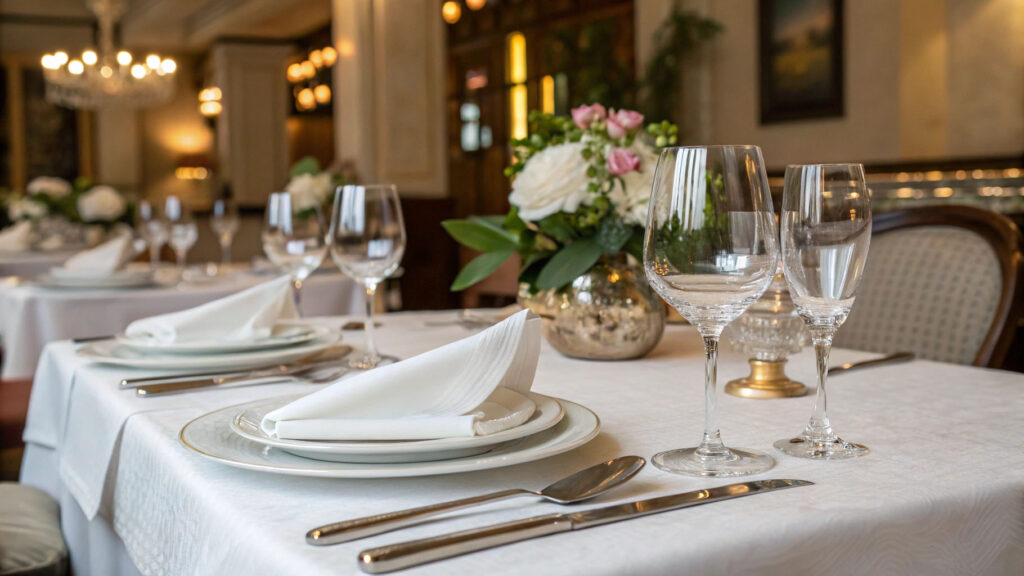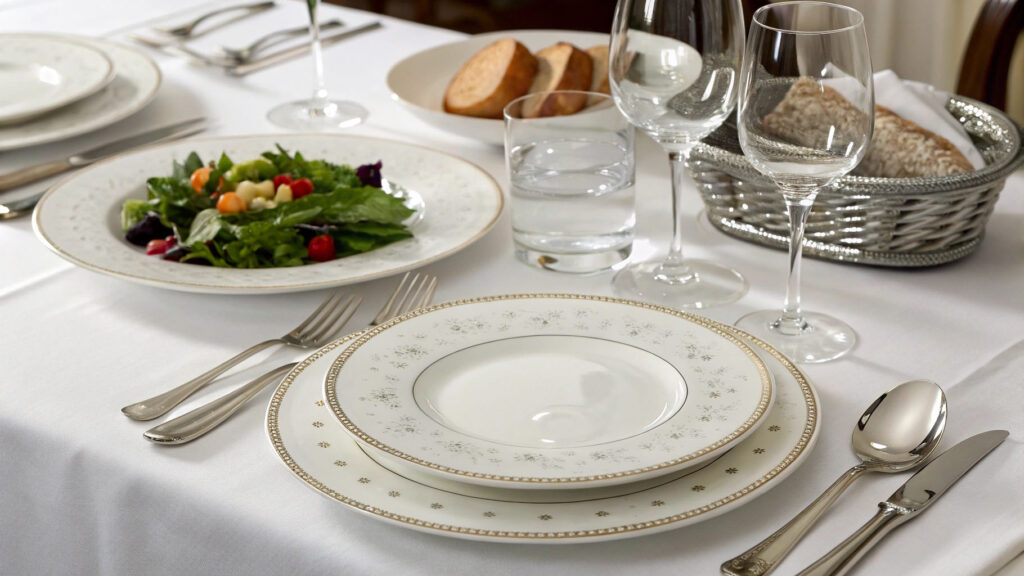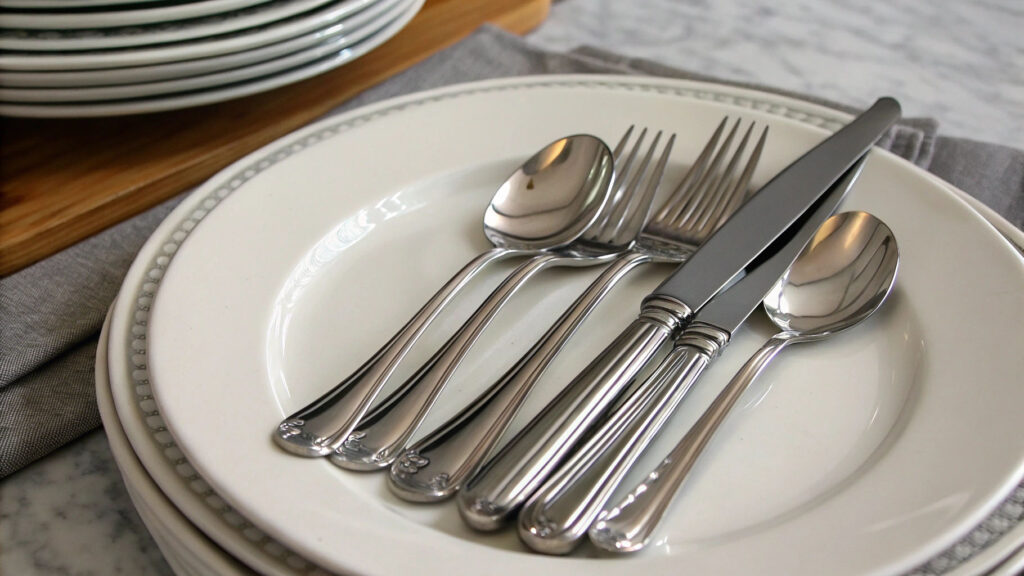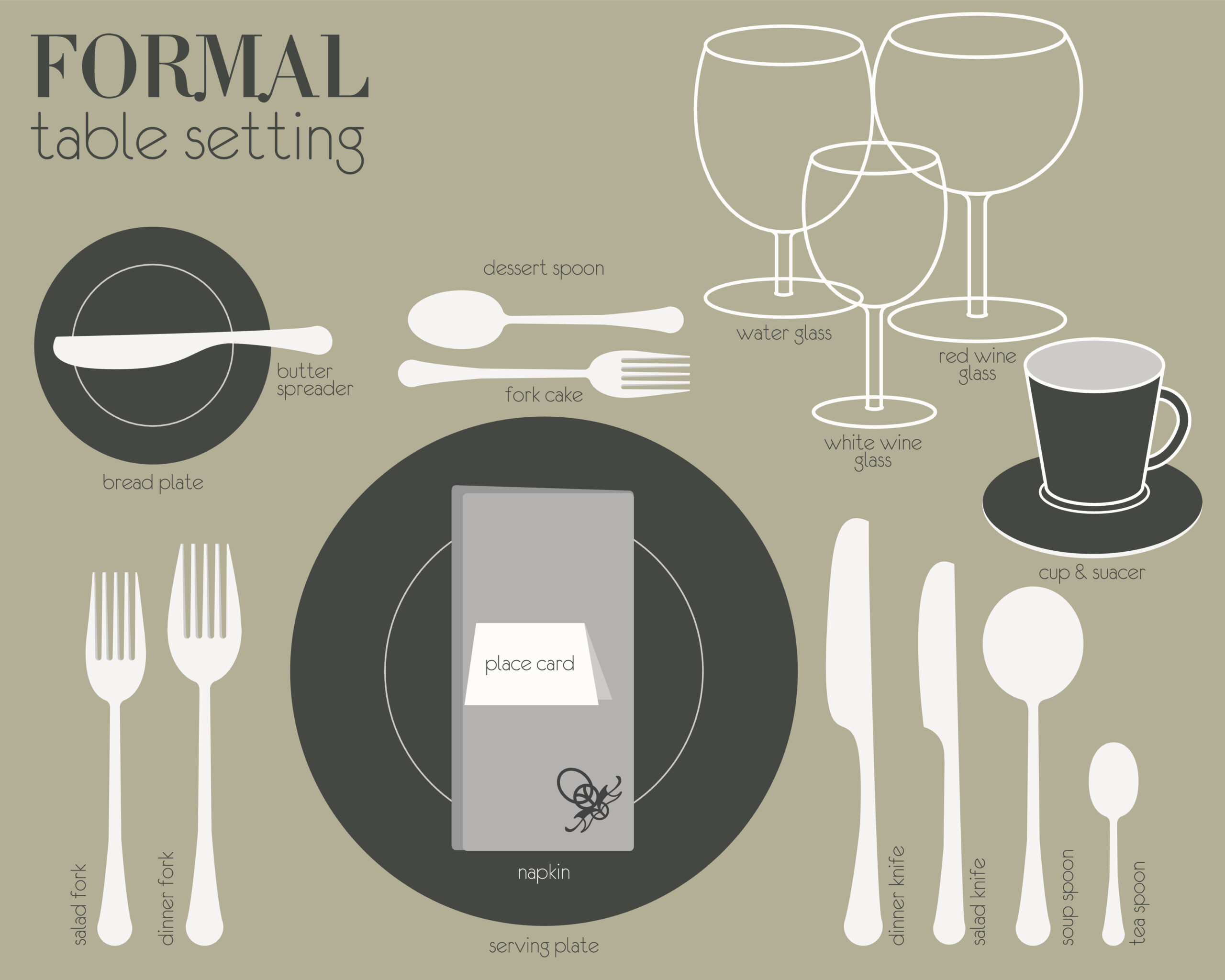What flatware do high-end restaurants use?
Choosing flatware for a restaurant is a high-stakes decision. The wrong choice feels cheap to guests and rusts in the dishwasher, costing you money and damaging your reputation.
High-end restaurants almost always use heavy-weight 18/10 stainless steel flatware. This material offers a luxurious feel, a brilliant shine, and the superior durability needed to withstand constant commercial dishwashing. Classic silver is the preferred color for its timeless appeal.

Now you know the industry standard. But there's more to it than just a number. As a factory owner, I supply flatware to hotel groups and restaurant chains. I work closely with procurement managers like Jacky, who manages purchasing for a major US brand's hospitality division. For him, the choice is about more than just looks; it's about long-term performance and brand image. The weight, the balance, and the finish are details that guests notice. Let's explore these details so you can understand what truly sets fine dining flatware apart.
What is restaurant silverware made of?
You see a beautiful fork at a nice restaurant. What is it made of? Choosing the wrong material for your own establishment means bent forks and rusty spoons after just a few weeks.
Restaurant silverware is primarily made from stainless steel. High-end restaurants use Grade 18/10 for its weight and rust resistance. More casual dining spots might use Grade 18/0. Knives are always made from a harder steel like Grade 420 to keep a sharp edge.

The material chosen is a direct reflection of the restaurant's quality level. When I work with a client buying for a 5-star hotel, the specifications are non-negotiable. They need flatware that can survive thousands of wash cycles and still look perfect. This all comes down to the grade of stainless steel.
Material Breakdown for Commercial Use
The restaurant environment is tough. High-heat dishwashers, harsh detergents, and constant use mean the material must be strong. Here’s a breakdown of what restaurants use and why.
- 18/10 Stainless Steel1: This is the premium choice. It contains 18% chromium and 10% nickel. The high nickel content gives it a substantial, heavy feel, a bright, silver-like shine, and the best defense against corrosion from food and chemicals. This is the standard for fine dining.
- 18/0 Stainless Steel: This is a common choice for high-volume, casual restaurants. It contains 18% chromium but no nickel. It's still very durable, but it lacks the heft and luster of 18/10 and is more prone to staining over time.
- 420 Stainless Steel2: This is specifically for knives. It has a different structure that allows it to be heat-treated for hardness. A knife made from 18/10 steel would be too soft to cut effectively. Every restaurant knife, from budget to luxury, uses this type of steel.
What is the highest quality of stainless steel flatware?
You want the best flatware for your collection or restaurant. But the market is full of confusing labels. Picking the wrong "high-quality" option leads to disappointment and wasted money.
The highest quality stainless steel commonly used for flatware is 18/10. The "10" represents 10% nickel content, which provides superior protection against rust and corrosion, a substantial weight, and a brilliant, long-lasting luster unmatched by other grades.

When Jacky inspects samples from my factory, the first thing he checks is the "18/10" stamp. For his luxury hotel clients, this is the minimum standard. The quality is not just in the name; it’s something you can feel in your hand and see in the shine. Understanding why 18/10 is the best helps you make smarter purchasing decisions.
Comparing the Grades of Quality
The difference in quality comes down to the percentage of nickel. Nickel is a relatively expensive metal, so more nickel means a higher cost, but also much better performance.
| Grade | Composition | Key Features | Feel & Appearance |
|---|---|---|---|
| 18/10 | 18% Chromium, 10% Nickel | Best corrosion resistance, very durable | Heavy, brilliant silver-like shine |
| 18/8 | 18% Chromium, 8% Nickel | Excellent corrosion resistance | Weighty, bright shine |
| 18/0 | 18% Chromium, 0% Nickel | Good durability, magnetic | Lighter weight, less luster, prone to stains |
While Grade 316 steel is technically superior, it's typically reserved for medical or marine use and is overkill for flatware. For all practical purposes in fine dining and premium home use, 18/10 stainless steel is the undisputed king of quality.
Which fork to use at fancy restaurants?
You sit down at a fancy dinner and see multiple forks. Using the wrong one feels embarrassing. This simple confusion can make a guest feel out of place.
At a fancy restaurant, you use the forks from the outside in. The fork furthest from your plate on the left is for the first course, such as a salad or appetizer. The fork closer to the plate is for the main entree.

This "outside-in" rule is the simplest way to navigate a formal table setting. I supply many high-end restaurants, and they set the table as a map for the meal. Each utensil has a specific place and a specific purpose. Knowing the layout makes the dining experience smoother and more enjoyable. It's a small detail that shows the restaurant's commitment to a traditional, high-quality experience.
Decoding the Formal Place Setting
A formal setting might seem complex, but it follows a clear logic. The utensils are placed in the order you will use them.
- Outer Left Fork (Salad Fork): This is typically smaller than the dinner fork and is used for the first course, like a salad or appetizer. Once you use it, it will be cleared away with the plate.
- Inner Left Fork (Dinner Fork): This is the large fork you will use for your main course. It stays on the table until the main course is finished.
- Dessert Fork/Spoon: Sometimes, a small fork and spoon are placed horizontally above your plate. These are for dessert.
- Oyster Fork: If you are served shellfish, you might see a very small, three-pronged fork to the right of your spoons. This is the only fork placed on the right side.
Understanding this simple order removes any guesswork and lets you focus on enjoying your meal.
What is the best color for flatware?
You want to choose a stylish flatware color. But trendy colors like black or gold can chip and fade, making your investment look cheap after a few washes.
The best color for flatware, especially for restaurants, is the classic silver finish. This is the natural color of polished stainless steel. It is timeless, elegant, and extremely durable, withstanding harsh commercial dishwashers without chipping or fading.

While I produce flatware in many colors like gold, matte black, and champagne using a PVD coating process3, I always advise my restaurant clients to stick with classic silver. The hospitality business is brutal on tableware. Durability is not just a feature; it's a requirement for profitability. Classic silver flatware doesn’t have a coating that can be damaged. Its color is the material itself. It can be polished and re-polished for years, making it the most reliable and cost-effective choice for any high-use environment.
Silver vs. PVD Colors: A Practical Comparison
While colored flatware is popular for home use and special events, it presents challenges for restaurants. PVD (Physical Vapor Deposition) is a strong coating, but it's not indestructible.
| Feature | Classic Silver (Polished Steel) | PVD Coated (Gold, Black, etc.) |
|---|---|---|
| Durability | Extremely High. Cannot chip or peel. | High, but can be scratched or worn down over time. |
| Maintenance | Easy. Can withstand aggressive washing and polishing. | Requires gentler handling. Harsh detergents can dull the finish. |
| Longevity | Very Long. Can last for decades in a commercial setting. | Shorter lifespan, especially in high-turnover restaurants. |
| Style | Timeless, elegant, and matches any decor. | Trendy and modern, but can go out of style. |
For a restaurant needing thousands of beautiful, long-lasting pieces, nothing beats the performance of classic silver.
Conclusion
High-end restaurants choose heavy 18/10 stainless steel flatware in a classic silver finish. This guarantees a luxurious guest experience and provides the durability needed for demanding commercial use.
-
Explore the advantages of 18/10 stainless steel for kitchenware, including its durability and resistance to corrosion. ↩
-
Learn why 420 stainless steel is the go-to choice for knives, focusing on its hardness and effectiveness in cutting. ↩
-
Understanding the PVD coating process can help you appreciate its advantages in durability and aesthetics for flatware. ↩
